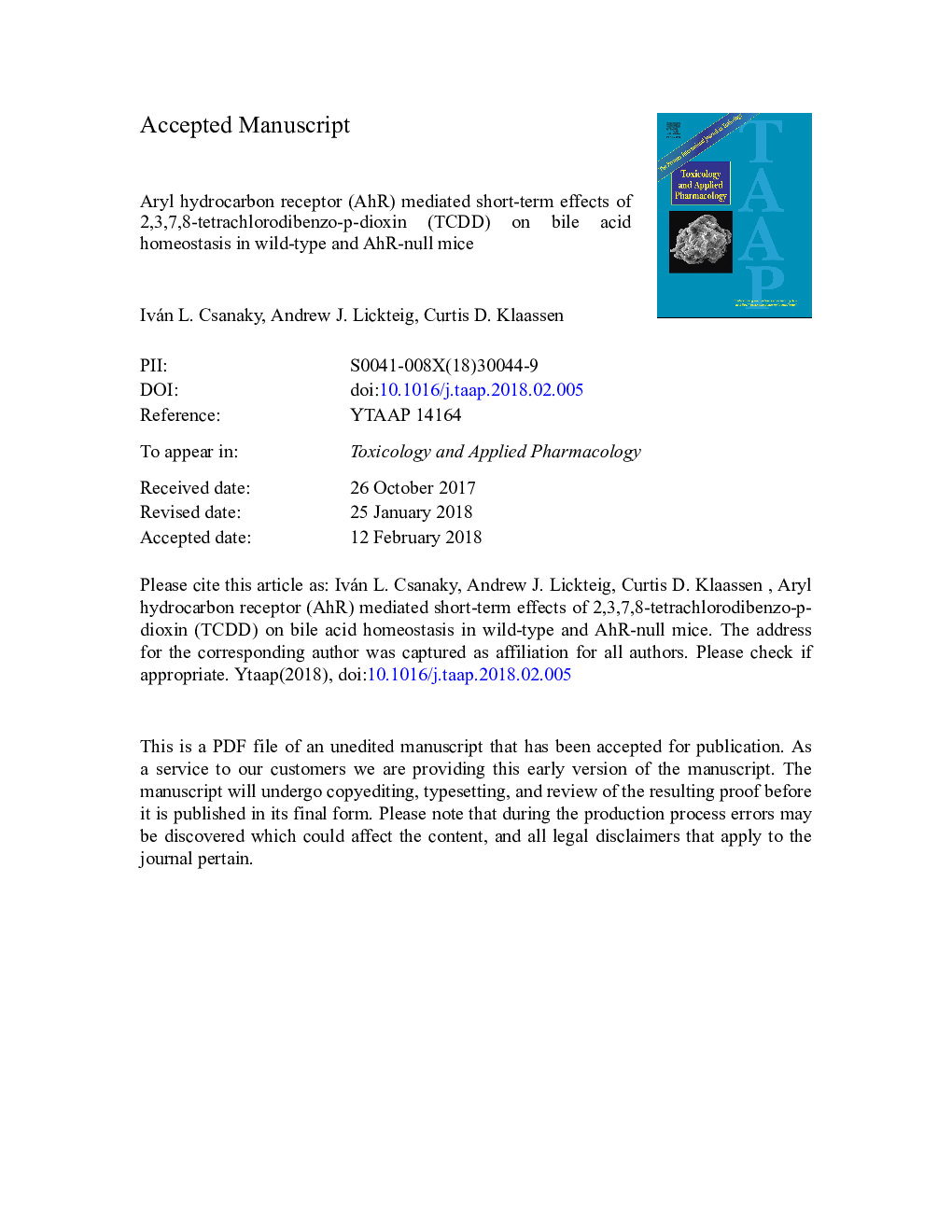| Article ID | Journal | Published Year | Pages | File Type |
|---|---|---|---|---|
| 8538757 | Toxicology and Applied Pharmacology | 2018 | 49 Pages |
Abstract
The effects of the most potent aryl hydrocarbon receptor (AhR) agonist 2,3,7,8-tetrachlorodibenzo-p-dioxin (TCDD) on bile acid (BA) homeostasis was examined in male and female wild-type and AhR-null mice shortly after 4-day exposure, rather than at a later time when secondary non-AhR dependent effects are more likely to occur. TCDD had similar effects on BA homeostasis in male and female mice. TCDD decreased the concentration of total-(Σ) BAs in liver by approximately 50% (all major BA categories except for the non-6,12-OH BAs), without decreasing the expression of the rate limiting BA synthetic enzyme (Cyp7a1) or altering the major BA regulatory pathways (FXR) in liver and intestine. Even though the Σ-BAs in liver were markedly decreased, the Σ-BAs excreted into bile were not altered. TCDD decreased the relative amount of 12-OH BAs (TCA, TDCA, CA, DCA) in bile and increased the biliary excretion of TCDCA and its metabolites (TαMCA, TUDCA); this was likely due to the decreased Cyp8b1 (12α-hydroxylase) in liver. The concentration of Σ-BAs in serum was not altered by TCDD, indicating that serum BAs do not reflect BA status in liver. However, proportions of individual BAs in serum reflected the decreased expression of Cyp8b1. All these TCDD-induced changes in BA homeostasis were absent in AhR-null mice. In summary, through the AhR, TCDD markedly decreases BA concentrations in liver and reduces the 12α-hydroxylation of BAs without altering Cyp7a1 and FXR signaling. The TCDD-induced decrease in Σ-BAs in liver did not result in a decrease in biliary excretion or serum concentrations of Σ-BAs.
Keywords
FGF15BALMRPBcrpCDCAHDCAABCFXRUDCANtcpTGR5BSEPFGFR4HNF4αOATPNPC1L1LXRαSecondary bile acidsCYP8B1LRH1BAATunconjugated bile acidsTCDDDCASHPMDRCyPAHRENTMCAi.p.2,3,7,8-Tetrachlorodibenzo-p-dioxinfarnesoid X receptorUPLC-MS/MSAsbtLCAChenodeoxycholic acidDeoxycholic acidTaurodeoxycholic acidBile acidLithocholic acidHyodeoxycholic acidmuricholic acidCholic acidBile acidsOstUrsodeoxycholic acidapical sodium-dependent bile acid transporterOctequilibrative nucleoside transporterorganic cation transporterintraperitonealBiliary excretionMateorganic solute transporterFemaleCytochrome P450small heterodimer partnerfibroblast growth factor 15hepatocyte nuclear factor 4αCARMalemultidrug resistance-associated proteinmultidrug resistance proteinbreast cancer resistance proteinOrganic anion transporting polypeptideBile salt export pumpliver X receptor αATP-binding cassettearyl hydrocarbon receptorconstitutive androstane receptorfibroblast growth factor receptor 4
Related Topics
Life Sciences
Environmental Science
Health, Toxicology and Mutagenesis
Authors
Iván L. Csanaky, Andrew J. Lickteig, Curtis D. Klaassen,
